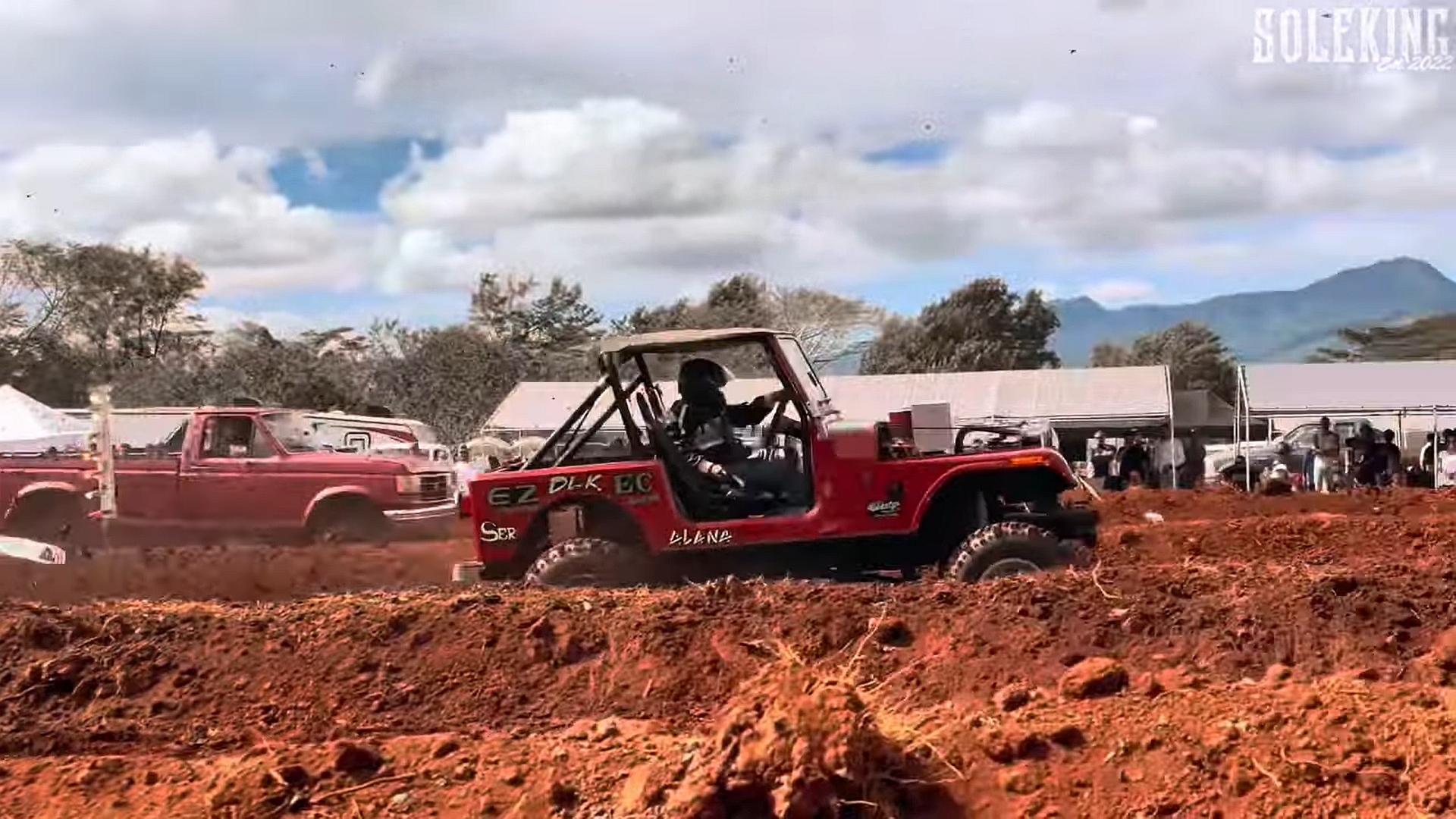

When you need 25 acres of land to be tilled, what’s the quickest (and likely funnest) way to do it? Hold a mud drag race, of course. At least, that was the obvious answer for one Hawaii farmer. But there’s a problem: The land in question is owned by the state. Babooze move or brilliant?
“Yes, mud dragging was a little unorthodox and stuff, but it was organized,” Scott Wong told Mean Hawaii. “It was safe, and it really brought the community members…originally invited to come out and have a day of fun.”

Safety was prioritized throughout the event planning, said Wong, who leases the large parcel in Central Oahu’s Whitmore Village through the Agribusiness Development Corp. (ADC), a state agency tasked with transitioning defunct plantation fields and infrastructure into agriculture and food production use.
The event was genuinely intended as a sort of employee fun day. According to Civil Beat, the Built From Scratch Mud Drag was created so contractors, along with their families and friends, of Wong’s Ohana Hui Ventures could “help us and be part of the soil tilling.” Staging, bleachers, food trucks, and merchants were organized, with admission costing $25.
People arrived in anything and everything, from modified ATVs and dragsters to lifted Tacomas and Miatas. However, an event set up for 500 saw the attendee numbers more than double in size when a flyer was leaked via social media. “Unfortunately, more people came that wasn’t invited, and we had to turn a lot of people away just to keep it safe,” said Wong to KHON2 News.

Community leaders and the ADC had known about the event for some time. The ADC made attempts to shut it down up until the morning of, but backed off once it realized that a cancelation could do more harm than good, especially given the unexpected turnout.
“It was going to be a riot,” ADC Executive Director Wendy Gady told Civil Beat. “We couldn’t stop the traffic, couldn’t stop people coming in. It was not for lack of trying, but it was something that could not get controlled.”
Despite the massive crowd on hand, no significant injuries or arrests were reported. The Honolulu Police Department said pepper ball guns were needed to disperse a 10-person fight, and at least two people were treated for minor injuries, but these occurred later in the day toward the end of the event.

KHON2 said the state plans to hold a meeting this month to discuss the event and any potential ramifications for Wong. By the way, no one seems to agree on the actual terms of his lease agreement. The ADC says the land is zoned for food production; Wong says his lease is about managing brush, which he has done.
“The land right here was probably one of the worst parcels in the ADC’s portfolio,” said Wong. “Plus, there’s no water here. We’d have to bring it all in, or we pray for rain.”
Before the soil tilling event, Wong had already cleared the land of overgrown brush, invasive albizia trees, and plenty of rubbish, including abandoned vehicles. Regardless of the lease, the ADC admits that Wong has done a heck of a job with the cleanup.
“The land looks beautifully cleared,” said Gady, but she added that drag racing is “not at all in line with our policy and not at all in line with our statute.”
Wong told KHON2 the mud drag was a one-time deal, anyway. “It’s just a one-off event. We don’t plan to do another one because there may be trees here in this area,” he said. That’s because, along with adding native plants, Wong plans to maintain the area as grassland with the potential to grow hemp in the future.
“I have a conservation plan, I have a license, and we’re following that plan,” said Wong.
Sounds like Wong is doing more for the ʻāina and kanaka than the state or ADC, who maybe, just maybe, is more upset about not coming up with the creative and safe community event itself, especially one that shows an “evolution of the agricultural industry” and leads to the “development of new crops, markets, and lower production costs.” You know, per its objective and mission statement.